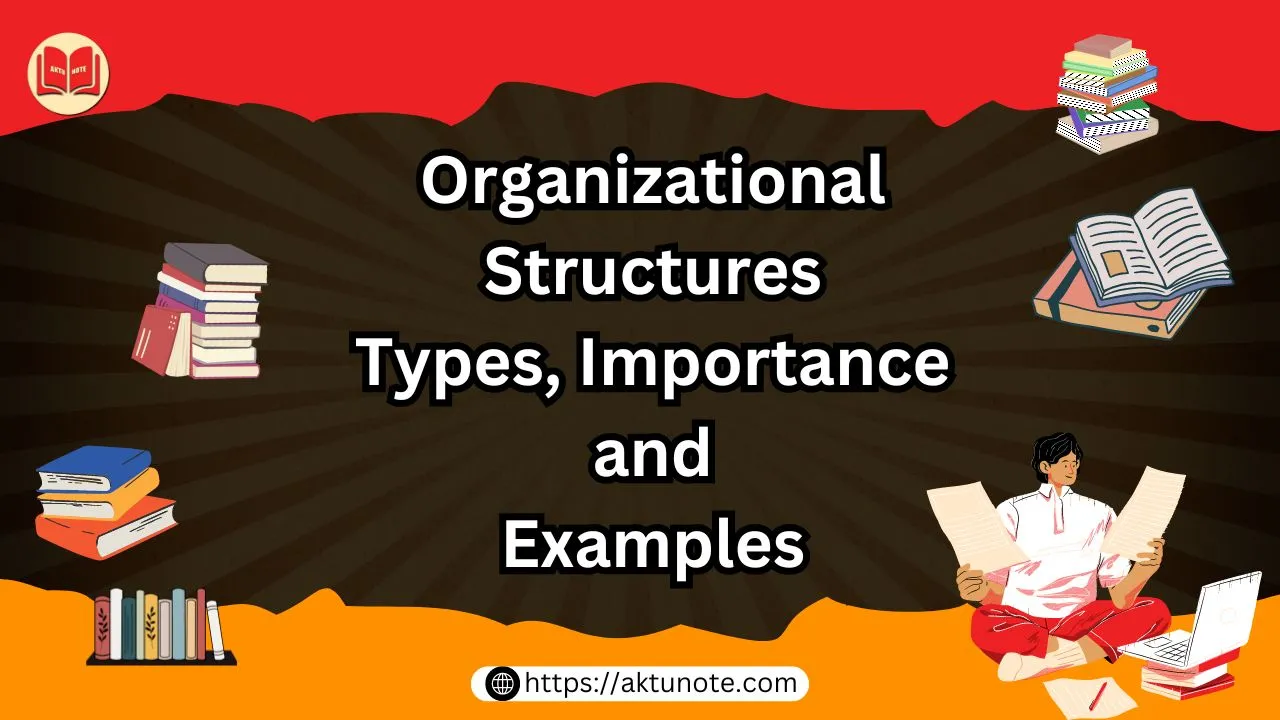Running a business is like organizing a big family—everyone has their role, and for things to run smoothly, you need some kind of structure. Whether it’s knowing who’s handling the cooking or who’s taking care of the budget, having clear roles and responsibilities helps keep everything on track. In the business world, this is where organizational structures come in. An organizational structure defines how tasks are divided, who reports to whom, and how decisions are made. Just like a well-organized family, the right structure keeps everyone working together efficiently toward common goals.
Organizational structure refers to the formal framework within which tasks, roles, responsibilities, and authority are distributed in an organization. It defines the hierarchy, reporting relationships, and decision-making processes, shaping how work is coordinated and executed across departments and teams. The structure of an organization profoundly impacts its efficiency, communication, and ability to adapt to change. Selecting the right organizational structure is critical for aligning the organization’s resources and capabilities with its strategic objectives, promoting operational efficiency, and fostering innovation. This article explores the various types of organizational structures, their characteristics, the advantages and challenges of each, and how organizations can choose the most appropriate structure for their needs.
What Is an Organizational Structure?
An organizational structure is a framework that defines how a company is arranged, how tasks are divided, and how communication flows, much like a family tree that shows who’s responsible for what and who reports to whom. By establishing clear reporting lines and accountability, the structure ensures that tasks are efficiently coordinated and communication is streamlined across different levels and departments. Depending on the company’s size, goals, and complexity, different structures are adopted to maximize efficiency, accountability, and flexibility, enabling the organization to respond to changes, foster innovation, and make informed decisions.
Types of Organizational Structures
There’s no one-size-fits-all solution when it comes to organizational structures. Each business has unique needs, and different structures work better for different types of companies. Here’s a look at some of the most common types:
Functional Structure
The functional structure is one of the most traditional organizational structures. In this setup, employees are grouped based on their specific skills or functions—like finance, marketing, sales, or operations. Each department focuses on its own area of expertise, with a manager overseeing the group. It’s like organizing family chores by category—one person handles cleaning, another cooks, and someone else manages the finances.
Key Characteristics
- Clear division of labor by specialty.
- Each department has its own manager or head.
- Employees focus on their specific area of expertise.
Advantages
- Specialization improves efficiency and productivity.
- Clear chain of command within each department.
- Easier to manage tasks and responsibilities within a function.
Challenges
- Communication between departments can be limited, leading to silos.
- Decision-making can become slower due to hierarchy.
Best For
Smaller or medium-sized companies where specialized departments are critical.
Divisional Structure
In a divisional structure, the company is divided into smaller, self-contained units or divisions based on products, services, or geographic locations. Each division operates almost like its own small business, with its own resources and management team. It’s like dividing your family by interests—some handle cooking, others handle sports activities, and each group has its own leader.
Key Characteristics
- Divisions operate independently of each other.
- Each division has its own resources, such as sales, HR, and finance teams.
- Divisions are often based on product lines or geographic regions.
Advantages
- Flexibility to adapt to different markets or product lines.
- Faster decision-making within each division.
- Managers have a clear focus on their division’s goals.
Challenges
- Duplication of resources across divisions can be costly.
- Divisions may compete for resources or attention.
Best For
Large companies with multiple product lines or locations, such as multinational corporations.
Matrix Structure
The matrix structure is a more complex system that blends elements of both the functional and divisional structures. In this setup, employees have dual reporting relationships—they report to both a functional manager and a project or product manager. It’s like having two bosses at home: one parent who handles chores and another who organizes family trips.
Key Characteristics
- Employees report to more than one manager.
- Teams are often formed to work on specific projects or products.
- Encourages collaboration between departments.
Advantages
- Encourages collaboration and communication across departments.
- Resources can be shared more efficiently across projects.
- Flexibility to respond to market or project changes quickly.
Challenges
- Dual reporting can create confusion and conflict.
- More complex to manage due to multiple reporting lines.
Best For
Companies that work on multiple projects or products and need flexibility, such as in the tech or engineering sectors.
Flat Structure
In a flat structure, there are few or no levels of middle management between staff and executives. It’s a more horizontal setup, where employees are given more autonomy and responsibility. This structure promotes a more collaborative and flexible work environment. It’s like a family where everyone has an equal say in decisions, and no one is in charge of everyone else.
Key Characteristics
- Minimal hierarchy, with fewer layers of management.
- Employees often have more responsibilities and decision-making power.
- Communication is more direct between leadership and staff.
Advantages
- Faster decision-making due to fewer levels of management.
- Encourages employee involvement and empowerment.
- Reduces overhead costs associated with management layers.
Challenges
- Can lead to role confusion without clear leadership.
- Difficult to manage in large organizations as it can become chaotic.
Best For
Small businesses, startups, or companies that value collaboration and innovation.
Network Structure
The network structure is a modern organizational setup that emphasizes outsourcing and partnerships. Instead of keeping everything in-house, the company relies on external organizations for some functions while focusing on its core business. It’s like outsourcing certain family chores—maybe you hire someone to clean the house so you can focus on cooking.
Key Characteristics
- Emphasizes external partnerships and collaborations.
- The organization focuses on its core strengths while outsourcing other tasks.
- Flexible and adaptive to changing needs.
Advantages
- Allows the company to stay lean and focus on its core competencies.
- Flexibility to scale and adapt through partnerships.
- Reduces internal operational costs.
Challenges
- Can lead to less control over outsourced tasks or functions.
- Success depends heavily on the quality and reliability of external partners.
Best For
Companies that operate in fast-changing industries or those that want to focus on a narrow set of core functions, like tech firms or consulting businesses.
Choosing the Right Organizational Structure
Selecting the right organizational structure is a critical decision that depends on various factors, including the organization’s size, industry, goals, and external environment. Key considerations when choosing a structure include:
Size and Growth Stage
Smaller organizations or start-ups may benefit from flat or functional structures, while larger companies may require divisional or matrix structures to manage complexity and scale.
Industry and Market Conditions
Industries that require high levels of innovation or adaptability, such as technology, may benefit from more flexible structures like matrix or network models. In contrast, industries focused on efficiency and standardization, such as manufacturing, may prefer functional or divisional structures.
Strategic Objectives
An organization focused on innovation and rapid product development may need a matrix structure to foster collaboration across functions, while a company focused on operational efficiency may benefit from a more hierarchical functional structure.
External Environment
Organizations operating in dynamic or competitive environments may need a flexible structure, such as a network or matrix model, to respond quickly to market changes. In more stable environments, a traditional functional or divisional structure may suffice.
Why Is an Organizational Structure Important?
Clarity of Roles
An organizational structure clearly defines who is responsible for what tasks. It’s like making sure everyone in the household knows their chores—without this, things can get confusing, and tasks might get overlooked. In a company, clear roles help avoid duplication of work and ensure that everyone knows what’s expected of them.
Efficient Communication
A well-structured organization improves communication by defining the lines of authority and reporting. Just like knowing who to go to when you need a problem solved in your family, an organizational structure makes it clear who reports to whom, streamlining communication and decision-making processes.
Accountability
With a clear structure, it’s easier to hold people accountable for their responsibilities. Think of it like assigning chores at home—if someone’s responsible for taking out the trash, you know who to go to when it doesn’t get done. In business, accountability ensures that tasks are completed and goals are met.
Flexibility and Growth
The right organizational structure allows a company to scale and adapt as it grows. As with a growing family, new members bring new dynamics, and the structure needs to evolve. A flexible organizational structure helps businesses expand smoothly without getting bogged down in complexity or miscommunication.
Examples of Organizational Structures in Action
Google (Matrix Structure)
Google uses a matrix structure to manage its diverse projects and global operations. Employees often report to both functional managers and project leaders, encouraging collaboration across teams while allowing flexibility to innovate on multiple fronts.
McDonald’s (Divisional Structure)
McDonald’s operates with a divisional structure, where the company is organized by geographic regions and product lines. Each division has its own management team and resources, allowing the fast-food giant to adapt to local markets while maintaining its global brand.
Zappos (Flat Structure)
Zappos is known for its flat structure, which emphasizes employee empowerment and a strong company culture. The company has very few layers of management, which fosters a more collaborative and innovative environment.
For More Content Check Out :- KMBN 301
Conclusion
Organizational structures are like the backbone of a business, providing the support and clarity needed for efficient and effective operations. Just as families need clear roles to run smoothly, businesses require the right structure to ensure tasks are handled, communication flows, and decisions are made without confusion. The type of structure an organization adopts—whether for a startup or a global corporation—depends on its size, industry, goals, and environment. By selecting and adapting the right structure, companies can optimize performance, improve collaboration, and position themselves for long-term success in a dynamic business landscape. The best structure is one that aligns with the organization’s strategy and operational needs while allowing flexibility for growth and adaptation.

